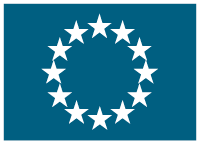Testing mechanisms of species invasion in Galápagos: role of resource competition and species traits
(TEMSPIG)
Start date: May 1, 2010,
End date: Apr 30, 2013
PROJECT
FINISHED
Biological invasions are the second most important threat to biodiversity, after habitat loss and habitat transformation. However, knowledge of the mechanisms underlying the success of species invasions is limited by the lack of information about the pre-invasion state of the community and the lack of experimental approaches to studying invader impacts. Considering that invasive species are driving native species extinctions and changing the functioning of ecosystems, modern experimental approaches are urgently needed to understand and to mitigate invasive species impacts. The Galápagos archipelago is renowned for its endemic species, yet this unique ecosystem is undergoing profound alterations as a result of plant and animal invasions, especially caused by the red quinine tree Cinchona pubescens. Cinchona was introduced to Santa Cruz Island and is now in the process of transforming the formerly treeless highlands into a forest habitat. Previous descriptive studies suggested that Cinchona had significant negative effects on species richness and cover and that it altered the microclimate. However, the mechanisms underlying these impacts are completely unknown since experimental manipulations have not been conducted. Therefore, the central objective of my study is to elucidate the ecological mechanisms that result in the extraordinary success of Cinchona pubescens as an invader. By forging a collaboration principally between scientists at Brown University, Technische Universität Berlin, Freie Universität Berlin, and the Technische Universität München, I will learn techniques in experimental ecology and molecular biology and apply to them to test mechanistic hypotheses about the impacts of Cinchona on the native vegetation of the Galapagos highlands and the role of symbiotic arbuscular mycorrhizal fungi in facilitating this massive species invasion.
Get Access to the 1st Network for European Cooperation
Log In
or
Create an account
to see this content
Coordinator
TECHNISCHE UNIVERSITAET BERLIN
€ 238 099,90- Simone Ludwig
- STRASSE DES 17 JUNI 135 10623 BERLIN (Germany)
Details
- 100% € 238 099,90
-
 FP7-PEOPLE
FP7-PEOPLE
- Project on CORDIS Platform